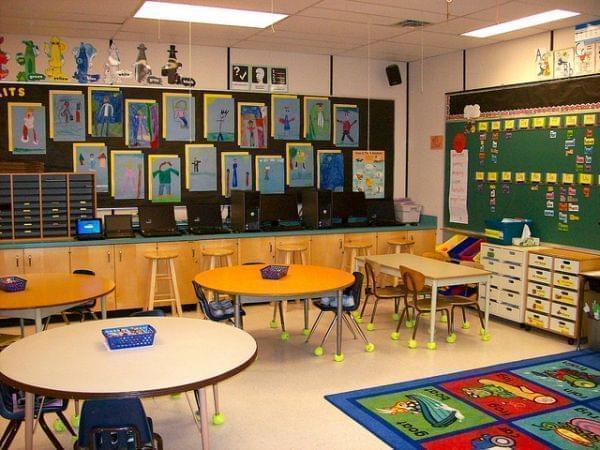Lawmakers Consider New Formula For School Budget Cuts

A new budget cut formula could cut school funding by a percentage (prorated) or per pupil. (Photo: Kathy Cassidy/Flickr)
I should begin with a word of warning: This story contains several F-words -- and by that, I mean facts, figures and school funding formulas.
Equity is a hot topic in Illinois education these days. Our state holds the dubious distinction of having the most inequitable school funding formula in the nation.
Why? Because our system relies on property taxes. Think about a town like Cairo compared to a north Chicago suburb like Kenilworth. The two towns are about the same size, but a 3,600-square-foot house in Kenilworth sells for $1.6 million, while a similar-size house in Cairo sells for $55,000.
Illinois gives all schools — even wealthy districts like Kenilworth — an annual allotment of money called General State Aid, or GSA.
The GSA formula is supposed to give poor districts like Cairo enough money to provide kids a basic education — called “the foundation level” -- even if that means giving Cairo a lot more actual dollars than Kenilworth.
But outgoing ISBE superintendent, Chris Koch says the current statute didn't take in to consideration under funding at the foundation level.
“The statute that’s written didn’t contemplate under-funding the foundation level. Thus, it puts us in a quandary of what do we do in that situation.”
Illinois hasn’t given schools their full GSA since 2011.
Instead, the amount has been “prorated” -- first by five percent, then 11 percent.
Those cuts have been implemented proportionately — or “pro-rata” — meaning that every district loses the same percentage.
Last month, in an attempt to fix the overall state budget, the legislature lopped more money from the current year’s school funding.
And this time, the conversation turned to a different method of distributing the pain.
In a Senate committee hearing, Democratic leader John Cullerton had a polite but testy exchange with Beth Purvis, recently-appointed secretary of education appointed by Governor Bruce Rauner.
“We were on the phone yesterday, and there were two different methods discussed, pro-rata and per-pupil. And I expressed my interest in having it done per-pupil,” said Cullerton.
Per pupil means taking the amount that the state is short, and dividing that amount by the number of students in the state.
These type of cuts gives lawmakers the amount they would have to cut per student in order to do a flat cut.
Purvis agreed that per-pupil was a legitimate option.
At the request of Governor Rauner’s office, the board was not allowed to consider anything except the pro-rata method, but they plan to discuss the per-pupil formula next month.
Members could consider adopting it for the next budget.
For the rest this year, however, Kenilworth where most families live in million dollar homes will lose $12 per pupil. Cairo — which has been called the most desolate small town in America -- will lose another $47 for each student.
Links
- New Law Allows Illinois Schools Access To Students’ Social Media Passwords
- Free And Reduced-Cost Lunches Served Up At Champaign County Schools
- Illinois Risks Losing Some Funding For Schools If They Don’t Administer The PARCC Test
- Sens. Barickman, Manar Announce School Funding Reform Plans
- Rauner’s Campaign Promises Could Come True By Way Of School Funding Overhaul, But Gov. Won’t Commit
- School Funding Fight Set To Resume In Senate
